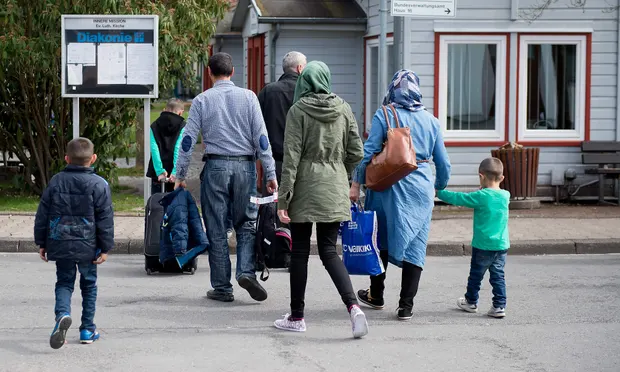Introduction: In a historic development, the European Union has overcome prolonged deadlock to strike a deal on long-delayed migration reforms. This breakthrough brings new hope for a cohesive approach to one of the most pressing challenges facing the EU. Explore the intricacies of the agreement, the compromises made, and the potential shifts in the landscape
Introduction:
In a historic development, the European Union has overcome prolonged deadlock to strike a deal on long-delayed migration reforms. This breakthrough brings new hope for a cohesive approach to one of the most pressing challenges facing the EU. Explore the intricacies of the agreement, the compromises made, and the potential shifts in the landscape of European migration policies.
The Long Road to Agreement:
To provide insights into the complexities of the negotiations, we turn to EU affairs expert, Dr. Elena Martinez. With a deep understanding of European politics, Dr. Martinez sheds light on the factors that contributed to the breakthrough and the challenges that had to be navigated.
Dr. Elena Martinez’s Analysis:
“The agreement on migration reforms is a testament to the intricate nature of EU decision-making. It required compromises from all member states, reflecting a delicate balance between national interests and the collective responsibility to address the migration crisis,” comments Dr. Martinez.
The Comparative Table: Key Components of the Migration Reforms
| Aspect | Before Reforms | After Reforms |
|---|---|---|
| Distribution of Asylum Seekers | Contentious, lack of consensus | New quotas and allocation system |
| Border Control and Security Measures | Varied approaches | Enhanced coordination and standards |
| Return and Readmission Policies | Inconsistent cooperation | Strengthened cooperation mechanisms |
| Solidarity Among Member States | Limited willingness to share burden | Commitment to shared responsibility |
| Legal Pathways for Migration | Fragmented policies | Streamlined processes for legal migration |
This table offers a comparative analysis of key components of EU migration policies before and after the reforms, illustrating the transformative impact of the agreement.

Image by: https://i. guim. co.uk
Member State Perspectives:
Explore reactions from key EU member states to the agreed-upon reforms. The article delves into how countries with diverse migration challenges perceive the deal and the concessions they had to make to forge a unified approach.
Impact on the Migration Crisis:
Assess the potential impact of the reforms on the ongoing migration crisis. From addressing humanitarian concerns to enhancing border control measures, the article examines how the agreement seeks to strike a delicate balance between compassion and security.
Future Implications:
Look ahead to the future of EU migration policies. The article discusses the potential ripple effects of the agreement, including its influence on EU solidarity, the rise of populism, and the region’s global standing in managing migration challenges.
Conclusion:
The EU’s breakthrough on long-delayed migration reforms marks a pivotal moment in the bloc’s efforts to address one of its most divisive issues. As member states navigate the complexities of shared responsibility, the agreement sets the stage for a more coordinated and humane approach to migration within the European Union.
Stay Updated:
Follow our in-depth coverage for real-time updates on the implementation of the migration reforms, reactions from stakeholders, and the evolving dynamics of European migration policies. As the reforms take effect, we’ll keep you informed.





















Leave a Comment
Your email address will not be published. Required fields are marked with *